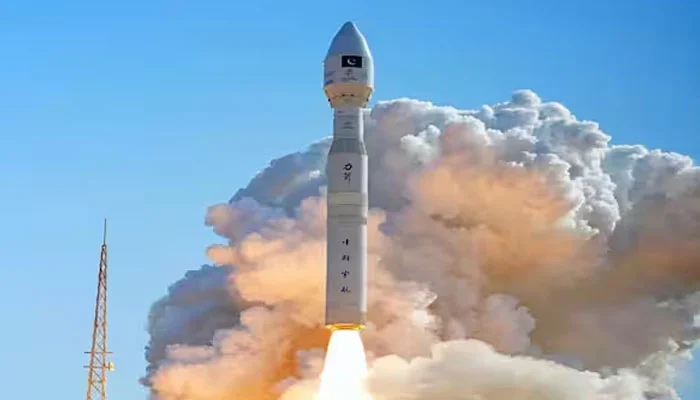Pakistan’s HS-1 Hyperspectral Satellite: A New Era in Earth Observation and Space Technology
In a significant breakthrough for its space ambitions, the Pakistan Space and Upper Atmosphere Research Commission (SUPARCO) announced the successful launch of the HS-1 Hyperspectral Satellite, Pakistan’s first-ever advanced Earth observation system. The satellite lifted off on 19 October 2025 from China’s Jiuquan Satellite Launch Centre, marking a pivotal milestone in the country’s remote-sensing and space technology capabilities. This launch positions Pakistan among a select group of nations with access to hyperspectral imaging, setting the stage for a new era of data-driven innovation and environmental monitoring. [Arab News Report]
What is HS-1 and Why It Matters
Unlike traditional optical or multispectral satellites, hyperspectral satellites capture imagery across hundreds of narrow, adjacent spectral bands. This allows the detection of subtle differences in surface materials and environmental conditions that conventional systems cannot capture. [Business Recorder Coverage]
- Land & Resource Analysis: Monitoring vegetation health, water resources, and land-use with unmatched spectral detail.
- Precision Agriculture: Mapping crop vitality, soil moisture, and optimizing yields through spectral analytics.
- Environmental Monitoring: Tracking deforestation, water quality, glacier melt, and pollution patterns.
- Urban Planning: Providing refined data on land cover, urban sprawl, and geological risks.
- Disaster Management: Supporting flood, landslide, and climate-risk early-warning systems.

The Strategic & Collaborative Angle
The launch not only highlights SUPARCO’s growing ambitions but also underscores the deepening space partnership between Pakistan and China. According to a Foreign Office statement, this mission represents “a pivotal step forward in Pakistan’s space programme” and reaffirms cooperative ties with China in the peaceful exploration and utilization of space. Related initiatives were also discussed during the Conference on Applications of Space Science and Technology (ICAST 2025).
For Pakistan, this satellite is seen as an instrument of socio-economic development, feeding into broader national priorities such as the China–Pakistan Economic Corridor (CPEC) and sustainable resource management. According to SUPARCO, HS-1’s data will help identify geo-hazard risks and guide infrastructure development in vulnerable regions.
Towards Implementation: What’s Next
SUPARCO has announced that HS-1 will undergo a calibration and in-orbit testing phase of about two months before becoming fully operational. Once active, HS-1’s data will unlock new opportunities across Pakistan’s innovation and startup ecosystem:
- Agritech startups leveraging hyperspectral data for crop-health analysis and yield forecasting. (see related startup success)
- Environmental & climate-tech platforms using the data for glacial melt, pollution, and water-quality monitoring.
- Infrastructure & mining firms assessing terrain, soil types, and hazard zones using high-resolution imagery.
- Disaster-response systems integrating satellite analytics for flood mapping and landslide detection.
Why This Launch Is a Big Deal for Pakistan’s Ecosystem
- Upgrades Pakistan’s remote-sensing capabilities from multispectral to hyperspectral imaging.
- Positions Pakistan among the few nations with operational hyperspectral Earth-observation infrastructure.
- Creates a new data domain for startups, researchers, and innovators to build on.
- Aligns with both national priorities (agriculture, climate resilience, urbanisation) and global sustainability goals.
- Demonstrates how satellite data can empower governance and entrepreneurship (see case study).
Critical Points & Considerations
- Data access & commercialization: The satellite’s real value depends on how open and usable HS-1 data will be for Pakistan’s private sector and academia.
- Integration into workflows: For agriculture or disaster-response, end-users need accessible data interpretation tools.
- Sustainability & continuity: Long-term impact depends on maintaining future satellites and data pipelines.
- Local capacity: While the China-Pakistan partnership is key, building a stronger domestic ecosystem for space data analytics will enhance self-reliance.
The launch of HS-1 marks a moment of pride for Pakistan’s space programme and signals the country’s intent to move up the value chain in Earth-observation technology. For Pakistan’s entrepreneurs and innovators, it represents a new frontier: data, innovation, and opportunity waiting to be unlocked.
FAQ
HS-1 is Pakistan’s first hyperspectral Earth observation satellite launched by SUPARCO. It captures imagery in hundreds of narrow spectral bands, allowing detailed analysis of soil, vegetation, water, and urban features.
HS-1 was successfully launched on 19 October 2025 from China’s Jiuquan Satellite Launch Centre, under Pakistan’s partnership with China.
The data can be used in precision agriculture, disaster management, environmental monitoring, urban planning, and infrastructure development, enabling data-driven decision-making across multiple sectors.




